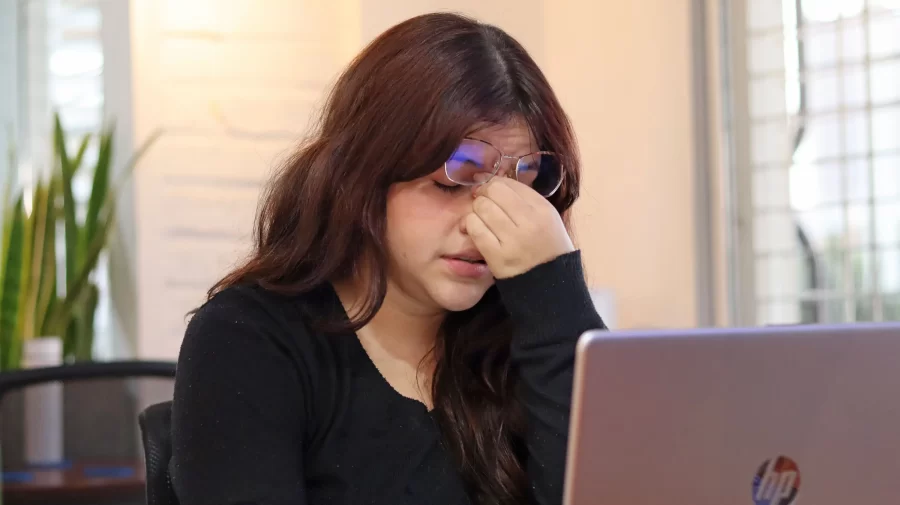In a world full of stressful situations, mindfulness meditation can be considered one of the foundations of mental health care. We can see examples of these meditation practices in many religions dating centuries ago.
Today, even your teacher, therapist, doctor, guru, and/or friends will tell you the same thing: mindfulness is good for you.

But what happens when mindfulness doesn’t work?
Imagine practicing mindfulness as if your life depends on it, and you continue and continue, but things just aren’t getting better… If you’ve felt like this before, don’t panic; you’re not alone. Mental health isn’t such an easy topic where you can have one solution to fix everyone’s problems.
If something like that existed, it would be magic more than anything else!
Every human is different, and a solution for me might not be the solution for you. That’s why I wrote this article: so that you can learn more about mindfulness practice and some other alternatives if it isn’t working for you.
So, before discussing the alternatives, let’s learn a little about mindfulness first, shall we?
What’s Mindfulness Meditation?
Mindfulness meditation is a powerful tool that invites you to cultivate a heightened awareness of the present moment. It’s a state of mind achieved when you are immersed in the thoughts, feelings, and sensations of the now.
You stop thinking about the past or the future and calmly accept and appreciate the present.
If you are in calm acceptance and awareness of everything around you, you can say that you’re in a state of mindfulness.
How To Practice Mindfulness:
To begin practicing mindfulness, you can try to do yoga, meditate, do some breathing exercises, or even do therapy. Mindfulness has become a popular activity nowadays, and if you’re not sure where to start, here are some steps you can follow:
First, set time aside and find a quiet space. Get comfortable, maybe sitting or lying down. Focus on your breathing and be. Scan your body and gradually shift your attention from one part of your body to another, noting any sensations or areas of tension.
The idea is to focus on the now, and if the last option doesn’t work for you, maybe you can try taking a mindful walk or using a guided meditation practice. Remember, there’s no one-size-fits-all approach to mindfulness.
Experiment with different techniques and find what works best for you. However, if you feel like mindfulness isn’t working for you, then it might be a good idea to try something else.
When Mindfulness Practice Isn’t Helpful
The core of mindfulness is to focus on the present moment while sitting still doing absolutely nothing. For some people, this becomes a time to unwind and reset.
Still, for others, it can become a time when negative emotions arise, and the feelings of stress and pressure will make it harder to regulate emotions, causing long periods of cyclical negative thinking.
Feelings that may inspire rejection of other helpful self-care practices, and therefore, prolonging suffering.
When it comes to mental health, too much mindfulness is something that does exist.
And contrary to its purpose of helping us build a pause that empowers us to make different decisions, reducing our negative emotions and reactivity to the events around us.
Too much mindfulness, on the other hand, blunts everything.
There are cases of mindfulness causing extreme emotional disengagement, where people no longer feel positive or negative emotions, and others where it evokes episodes of disassociation.
The consequences are decreased relationship satisfaction and fewer feelings of happiness or joy.
Mental Health Care Alternatives
So, mindfulness meditation practices are not working for you. Don’t worry, you’re not alone. To be in the present moment is not an easy task for everyone, there’s nothing wrong and there are more solutions to help you reduce stress and anxiety.
Many people who have had difficulties following mindfulness practices have seen considerable improvements in their well-being from physical exercise.
So, if you struggle with meditation and other mindfulness training, you can also try:
1. Exercising:
Engaging in regular exercise not only contributes to physical wellness but also offers a wide variety of mental health and psychological benefits.
Beyond the immediate mood boost, exercise plays a crucial role in stress reduction, helping to alleviate tension and promote relaxation. Regular physical activity has been associated with improved sleep patterns and reduced symptoms of anxiety and depression.
If that wasn’t enough to convince you, the sense of accomplishment and increased self-esteem accompanying reaching fitness goals further improves your mental health.
As a holistic approach, exercise fosters cognitive function and provides a valuable outlet for managing and preventing mental health conditions, making it an integral component of a comprehensive wellness routine.
So try paying your gym a visit. It might be really helpful!
2. Go on walks:
Taking regular walks is a simple yet powerful way to positively impact mental health.
Firstly, walking serves as an excellent stress reducer by promoting the release of endorphins, the body’s natural mood lifters.
The rhythmic nature of walking can have a calming effect, helping to alleviate feelings of anxiety and tension. Exposure to natural light during outdoor walks can improve mood and regulate circadian rhythms, contributing to better sleep patterns.
Let’s not forget that the physical activity associated with walking can improve cognitive function and enhance self-esteem, fostering a sense of accomplishment and well-being.
Overall, incorporating walks into a routine offers a holistic and accessible approach to supporting mental health.
If you have the time, go on walks occasionally or even try hiking! I’m sure the beautiful views will be worth the visit.
3. Include Your Friends:
Now that you’re considering exercising and going on walks, or maybe even starting a new sport, why not include your friends?
This would be like a double win for your mental health because you’re not only applying the benefits of exercising and keeping an active body, but you’re also doing it with the people you love, which is a fantastic way to beat loneliness and feel more connected.
Exercising together brings positive vibes and strengthens those social ties – plus, who doesn’t love a good laugh during a workout?
Having friends around also keeps you accountable. You’re more likely to stick to your exercise routine when you’ve got friends cheering you on. And let’s not forget the chats that happen while you’re breaking a sweat – it’s like a therapy session on the go!
Sharing the active journey with your crew isn’t just about physical health; it’s a feel-good experience that boosts mental resilience. So, grab your friends, hit the trails, or join a class – you’ll be doing wonders for your body and mind together!
4. Take Your Pet With You (Or Get One):
Taking your pet out for some exercise or adopting one can do wonders for your health. It’s not just about getting active; it’s about the pure joy pets bring to the table (or the park!). Having a pet is like having a built-in cheerleader and a 24/7 mood lifter.
Taking your dog for a walk or playing with your cat isn’t just fun – it’s a natural stress-buster. Pets add routine and structure to your day, and the unconditional love they dish out is like a warm, fuzzy hug for your soul.
Plus, being a pet owner is a ticket to a whole social scene. Whether you’re chatting with other pet parents at the dog park or simply enjoying the company of your four-legged buddy, it’s all about connections and good vibes.
So, whether it’s a playful romp or just some chill time on the couch, having a pet is like having a little therapist always ready to make you smile.
5. Cleaning
Cleaning fosters a sense of control and empowerment. Establishing a cleaning routine adds structure to daily life, contributing to stress management. The comfort derived from a clean and organized space, coupled with the positive impact on mental stability, creates a dynamic where the simple act of tidying up becomes a powerful tool for reducing stress and promoting a healthier mindset.
6. Listening To Music
Listening to music is a powerful and accessible way to alleviate stress. Music can influence the autonomic nervous system, regulating heart rate and reducing cortisol levels, contributing to a sense of relaxation.
Whether it’s soothing tunes or energetic beats, the emotional resonance of music provides a therapeutic escape, offering you a simple yet effective method to unwind and find solace amid life’s stresses.
Music also serves as a form of self-expression and emotional connection. Engaging with music allows you to explore and process your emotions, providing an outlet for both relaxation and catharsis.
The versatility of music, from calming melodies to upbeat rhythms, offers a personalized and adaptable tool for stress reduction, making it a universally accessible and enjoyable strategy for promoting mental balance.

7. Dancing
Dancing serves as a dynamic and enjoyable stress-relief strategy with both physical and emotional benefits.
Dancing also allows for self-expression and creativity, providing an outlet to release pent-up emotions and tension. Whether it’s a spontaneous solo dance party or joining a group, the social aspect of dancing fosters connection, peace, and joy, enhancing its stress-reducing impact.
8. Coloring
Coloring is a healthy way to relieve stress. It calms the brain and helps your body relax. This can improve sleep and fatigue while decreasing body aches, heart rate, respiration, and feelings of depression and anxiety.
Although coloring isn’t the ultimate cure for stress and anxiety, sitting down for a long session holds great value. As you color, pay attention to your breathing rhythm, ensuring steady, full breaths from your diaphragm, and tune into your heart rate periodically.
Try to let go of judgments or expectations and enjoy the simple beauty of coloring. It doesn’t matter if your picture is neat or messy. The only thing that matters is finding enjoyment and relaxation while coloring.
9. Take A Deep Breath
Don’t rush it. If you’re feeling burn out the best thing that you can do is to take a step back and do slowly but steadily regain your breath and finish your task.
A job can be stressful, and mindfulness sometimes is not the solution. I hope that this advice was helpful to you and that it could help you to see everything from a bigger perspective. Just don’t forget to take a deep breath from time to time. Breathe in through your nose for five seconds and hold for two seconds. Then, release your breath through your mouth for five seconds.
The future is important, but sometimes, we focus so much on the future that we forget about the present. So, focus on what you’re doing now and try to do your best while you’re at it!
See more articles by Ender Cárdenas.







